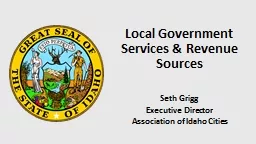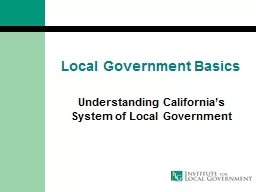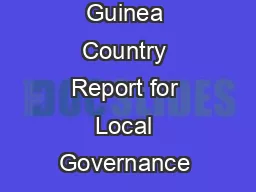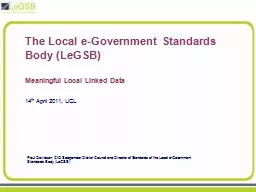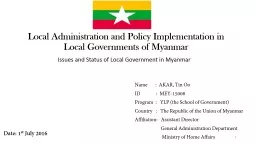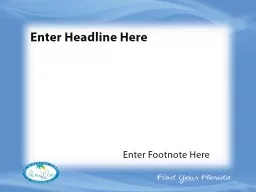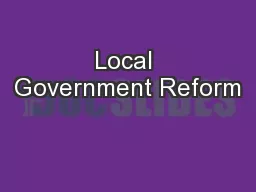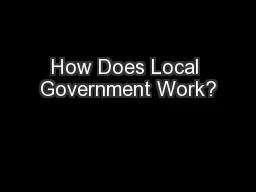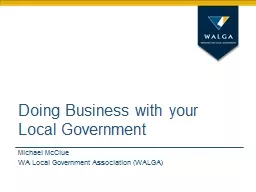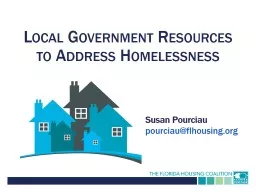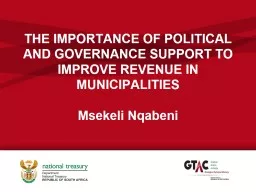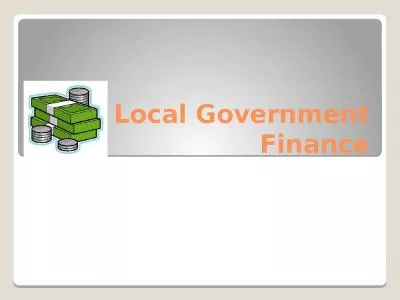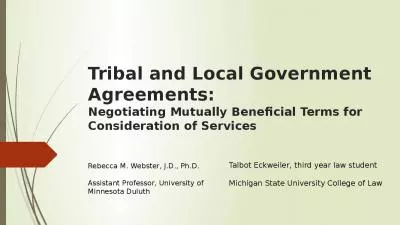PPT-Local Government Services & Revenue Sources
Author : test | Published Date : 2016-07-04
Seth Grigg Executive Director Association of Idaho Cities This Presentation Will Cover Services Provided by Counties Cities and Special Districts Major Revenue Sources
Presentation Embed Code
Download Presentation
Download Presentation The PPT/PDF document "Local Government Services & Revenue ..." is the property of its rightful owner. Permission is granted to download and print the materials on this website for personal, non-commercial use only, and to display it on your personal computer provided you do not modify the materials and that you retain all copyright notices contained in the materials. By downloading content from our website, you accept the terms of this agreement.
Local Government Services & Revenue Sources: Transcript
Download Rules Of Document
"Local Government Services & Revenue Sources"The content belongs to its owner. You may download and print it for personal use, without modification, and keep all copyright notices. By downloading, you agree to these terms.
Related Documents

